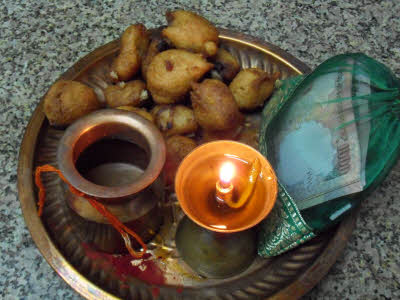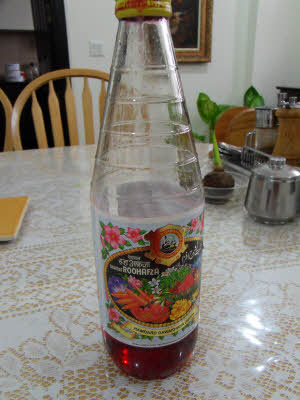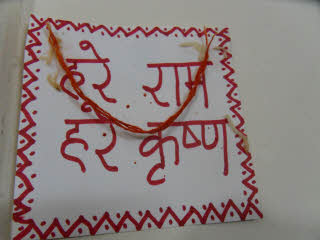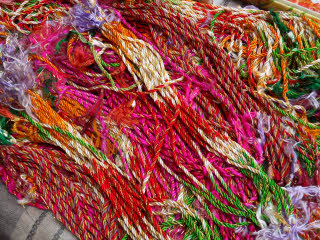The Rooh Afza Story
Written By: Ruchi
-
Oct•
24•13
Dussehra
Written By: Ruchi
-
Oct•
15•13
| Dussehra is one of the most important festivals celebrated in India. Dussehra is derived from the Sanskrit words Dasha and Hara, meaning remover of the bad fate. This day is celebrated as the victory of Lord Rama over the demon king Ravana. Dussehra is also known as Vijay Dashmi, which means victory on the tenth day. In Bengal this day marks the victory of Goddess Durga over the demons. |
| When Dussehra is celebrated on the tenth day of the Hindu autumn lunar month of Ashvin, which falls in September or October of the Western calendar. The first nine days are celebrated as Sharad Navratri meaning nine nights that culminate on the tenth day as Dussehra. |
| How is it celebrated Following items are needed for the Dussehra pooja: Rice kheer, lauki raita, two rotis, water chetnuts, radish, sugarcane, cow dung, sweets, a notebook, a small bowl of steamed rice, a handful of wheat grains, barley saplings, an earthen lamp with ghee, kalava and incense sticks. On the first day of Sharad Navratri, barley seeds are sown and watered every day except on the eighth day. By Dussehra the seeds grow in 6 inch saplings. |
 |
| Ten small balls of cow dung are made. One can even use the dry balls by making them in advance and drying them in sun for a few days. |
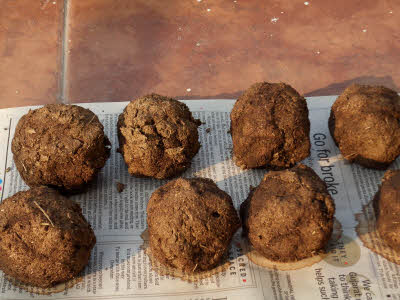 |
| On Dussehra, all the preparations are done after taking bath and without eating anything. A caricature of devi is made with wheat flour in east west direction. The cow dung balls are kept in two columns on the side if devi caricature. Some new seasonal vegetables like water chestnuts, radish and sugarcane are kept in the middle of these two rows. In a big plate barley saplings are kept along with roli, dry rice, work instruments and sweets. Kheer is poured in 10 small bowls and kept next to the cow dung balls. In a separate plate two rotis, steamed rice and lauki raita are kept to be given away. A small bowl of water is also kept on the side. |
 |
| Incense sticks are lit along with earthen lamp. Satiya is made on the bowl of water with the help of roli and water. Kalava is tied on everybody’s wrist. Head of the family writes down the date and with whom they are celebrating Dussehra. They also write down the prices of some common day to day items in the notebook, whatever is applicable to them. Then the barley saplings are kept on the notebook and roli mixed with water is sprinkled on the notebook and the cow dung balls. |
 |
| Sisters do Tilak to their brothers with roli and rice. They also put barley saplings on one of the ears of their brothers. Then everyone eats the kheer and the sweets. |
 |
| In the evening the effigy of demon king Ravana is burnt in public places, which signifies burning the ten vices. |
 |
| Significance Dussehra is the victory of the soul over 10 vices – kaam (any kind of desire), krodh (anger), lobh (greed), moh (attachment), ahankara (ego), irshaya (jealousy), dwesh (revenge), chal (lying), hath (stubbornness) and aalasya (laziness). In the beginning of the Dwapar Yug, when the state of the souls was declining, authors wrote the stories of Lord Rama winning over demon king Ravana, where Ravana had ten heads. Ravana means the 10 vices, each head symbolizing one vice. Sita means the soul, captivated by Ravana (vices). Rama means God or the Supreme Soul, who kills Ravana (vices) and frees Sita (the soul) by hurting the naval of Ravana (the body consciousness). So Dussehra tells us to worship the Supreme Soul and become soul conscious to win over our vices and to free up the soul. |
| Dussehra is also the celebration of the onset of the new season. In olden times, most of the people used to be farmers so sowing the barley seeds and seeing the strength of the saplings was the test of the quality of seeds for the coming season. Traders noted down the prices of the day to day items to see the market trends year over year. Other workers worshiped their instruments because those instruments were the source of the bread and butter for their family. |
| Knowing all this, it is up to the individuals to decide exactly how they want to follow these customs in today’s context. |
My 1 year report card
Written By: Ruchi
-
Sep•
03•13
| It’s been a year that we moved back to India and here are how things stand (in the decreasing order of importance): |
Rakshabandhan
Written By: Ruchi
-
Aug•
21•13

